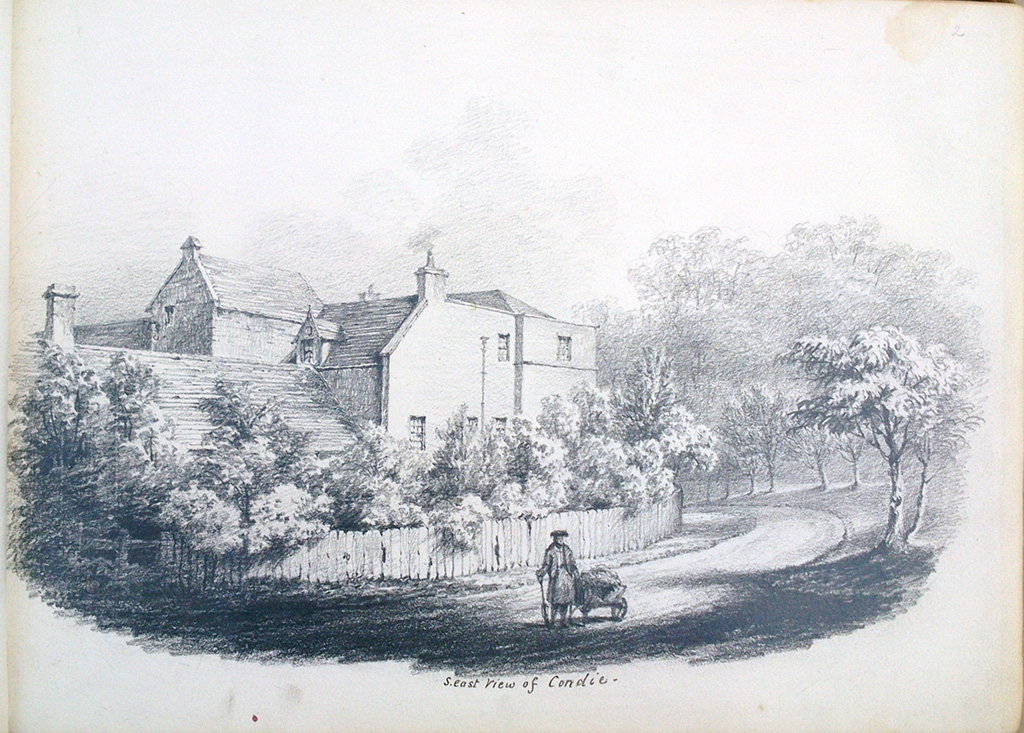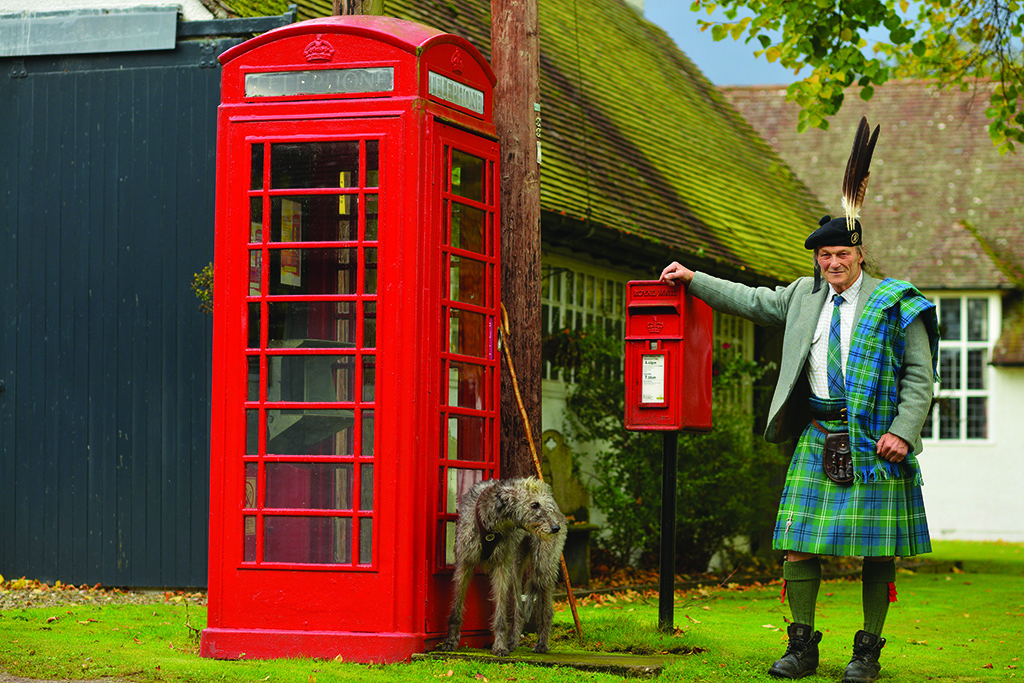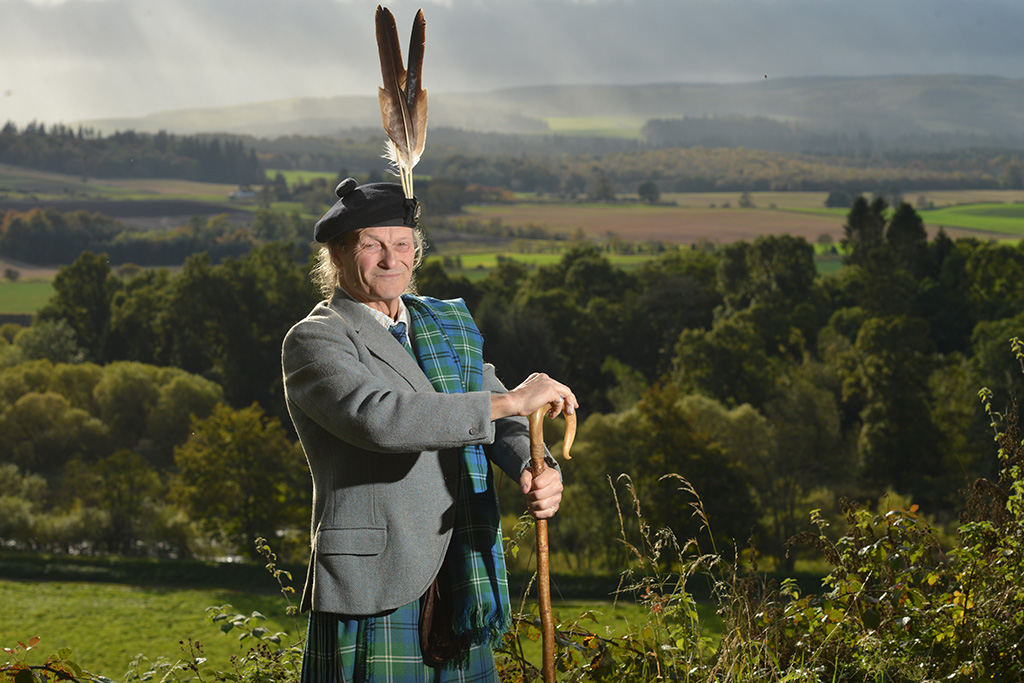
Scottish clan is like a phoenix from the flames
Over the centuries Clan Oliphant, as much as any Scottish clan, has seen its fortunes rise and fall against the backdrop of turbulent historical events.
Richard Eric Laurence Oliphant of that Ilk, who was recognised as the 34th Clan Chief in 2003, is now on a mission to raise the profile of what was once one of the more distinguished and powerful clans in Scotland.
‘I’ve always described it as picking up the one coloured tile that is your clan and putting it back into the pantheon mosaic of Scottish history,’ he says. ‘If everyone does the same, not for what it is in itself, but for its part in history, we can together repair a complete picture of the socio-cultural history. In that sense it is important.‘
Until 2003, when Richard matriculated at the court of Lord Lyon, the Oliphants had not had a Clan Chief since 1751.
He points out that other clans, such as MacArthur and Skene, also suffered a similar fate in the wake of the failed 1745 Jacobite rebellion and the subsequent banning of Highland dress and tartan in 1747.
‘The gap in time is due to the significance of the clan chief no longer being a focal point in society. That is changing again now – at least half of the current clan chiefs had not been recognised as clan chiefs 30 years ago and the Standing Council of Scottish Chiefs now has 150 chiefs.’
Like many Scottish clans, the Oliphants have numerous clan branches. Only the chieftains of Gask, Rossie and Bachilton, and Richard as the 12th Chieftain of the Condie Branch, are extant today.
At the moment the clan has no family seat, although Laurence Oliphant, chieftain of the Gask branch, has hosted the Blairgowrie Games at Ardblair Castle in recent times. Ardblair also houses the preponderance of known Oliphant memorabilia, including the Lords Oliphants’ charters and possessions, Jacobite relics and family portraits, many of which are now in the National Library of Scotland.
Hatton Castle in Angus was built in 1575 by Laurence, 4th Lord Oliphant. It was said that he would fire a cannon at travellers passing by to encourage them to ‘receive his hospitality’ in the castle ‘to pay a toll’.
In 1984 the Hatton Castle Trust, formed by Richard’s brother and clan historian Roderick Oliphant of Oliphant, Younger, bought back the castle but it had to be sold in 1995 following losses sustained at Lloyds of London in the late 1980s.

Newton of Condie before the fire
Roderick had set up a tax structure for the Clan to support the rebuild and a similar scheme has recently been set up by the Oliphant Clan & Family Association of North America for the Clan Society membership, explains Richard.
‘There are active Clan Societies in South Africa and Australia which will need similar schemes. I am very excited about the levels of energy put into co-ordinating clan activities, including increased representation at various clan games. I join in a monthly Skype conference call with the North American society where clan business worldwide can be aired and it’s likely other regional clan societies will join this to promote com-munication between them all.’
The last Oliphant Clan Gathering in 2014 at Strathallan School in Perthshire attracted 50-60 people. There are plans for a five-day gathering this year in Stirling and somewhere between 250-350 people are expected to attend the 2018 Oliphant Clan Gathering, which is also to be held in Stirling.
Clan members at these forthcoming events will be able to visit churches, houses and locations of significance to the Oliphants and become acquainted with the history of the clan.
Not only do the Oliphants have a rich and colourful history, but due to the prestige of the clan, it has been relatively well-documented.
The earliest information can be found in the 1046 Abbey of Saint Wandrille records where Osbert Olifard is documented as being the Seneschal of Normandy for William I, known as William the Conqueror. His children were subsequently made Earls of Hereford and Leicester in 1067 after Osbert died defending the infant William I.

Richard in the heart of Oliphant country, Strathearn (Photo: Angus Blackburn)
However, Osbert’s offspring, in their later efforts to depose the overbearing William I, lost everything.
‘Historical records show that the family then reappears soon after in Northamptonshire,’ says Richard, ‘after which David Olifard saves the life of King David I at the siege of Winchester Castle in 1141.
‘He was given Smailholm and Crailing to command the Borders and was made Judiciary of the Lothians, the first recorded. He was second only to the king’s brother so the Oliphants flourished in Normandy and in Scotland where, however, their luck changed.’
Richard says that like many large Scottish clans, the Oliphant fortunes have ‘cycled’ several times throughout history.
‘Oliphants have fought and fallen in nearly every major Scottish battle,’ he says. ‘They died at Flodden, survived Culloden, Prestonpans and Killiecrankie, but there are fewer of them than there might be. The land holdings of the Clan have also decreased over the centuries.
‘The 4th Lord Oliphant owned land in at least seven different counties and in Caithness alone he owned roughly a quarter of the county, including the town of Wick. He also had large estates in Perthshire, Angus, Fife, East Lothian while in Edinburgh he had Broxburn, which is where the airport is – that would have been fun to have on a lease – and Muirhouse, which has the beau-tiful walk at Gypsy Brae.’
However, despite inheriting this vast and impressive wealth, the spendthrift nature of Laurence, the 5th Lord Oliphant (1583-1603) meant that every last acre was lost in his lifetime. For instance, Muirhouse was sold in 1605, followed by the Caithness estates and Glensaugh the following year.
By 1626 the estates of Turin in Forfar, Kellie in Fife, Newtyle in Angus, Auchtertyre in Strathearn, Perthshire had also passed outwith the Oliphant family. Strathearn, the cradle of the Oliphant family, had land occupied by up to 15 branches of the clan for the following 200 years until the 19th century.
Roderick explains that the Stuart kings didn’t like the Lords Oliphant because of their part in the Raid of Ruthven, so many people who bought Oliphant property were ennobled as a means of blanking out the Oliphant name.
Richard, a former City financier, was born and brought up with his brother Roderick in Hong Kong where latterly, he says, they lived in a house at the top of the Peak.
‘As children we had little idea of Scotland except that our father sometimes wore the kilt – at 6ft 3in he didso with panache – and played the pipes and taught reels in Malaya, Singapore and Hong Kong.’
Richard and Roderick were sent to an English prep school and when their parents were on UK leave, they would take the boys to visit family in Skye.

Richard Oliphant, the head of Clan Oliphant
‘My father delighted us by telling stories, over and over, during the long car journey about internecine clan fighting.
The family also teased him about being the Oliphant “Monarch of the Glen”. All of this spurred Roderick and me to take an interest in our family history.’
It proved the family belief that Richard’s cousin, Lt-Cdr Ralph Henry Hood Laurence Oliphant, was heir-male to a dormant chieftaincy, becoming Oliphant of Condie in 1985.
When Ralph died after Richard’s father, Richard inherited the chieftaincy and later in 2003 the chiefship was confirmed by the Court of the Lord Lyon, part of the Scottish judiciary.
As well as acting as a central focus for Clan Oliphant and representing it on formal occasions, such as at the Standing Council of Scottish Chiefs, Richard also irons out historic misinformation about the integrity of the tartan, septs and the allegiances sworn by other clans.
Alongside his research as clan historian, Roderick promotes the modern day Clan Society and the Oliphant Clan Gatherings. The double act works well, with Richard welcoming any clan members to Edinburgh while deferring any questions on kith and kin to Roderick.
‘Over time the role of the Clan Chief has changed significantly,’ Richard points out. ‘Clan means children, so although an eminent genealogist told me that chiefs have the power of life and death over clansmen, there is no vertical distance between a chief and his clan today. I’ve always identified with this egalitarian approach rather better than the historic vertical social structure in England. I was told by a social historian, the earls and their equivalents had the power of life and death.
‘Nowadays, the practical role of the Clan Chief is to serve as a clan focus. We welcome clan members coming to Scotland and make their visit a richly interesting experience. The benefit now of the clan is not only for what it is, but for what it is part of – in that sense it’s an important piece of Scotland’s social history.’
This feature was originally published in 2017.
TAGS

